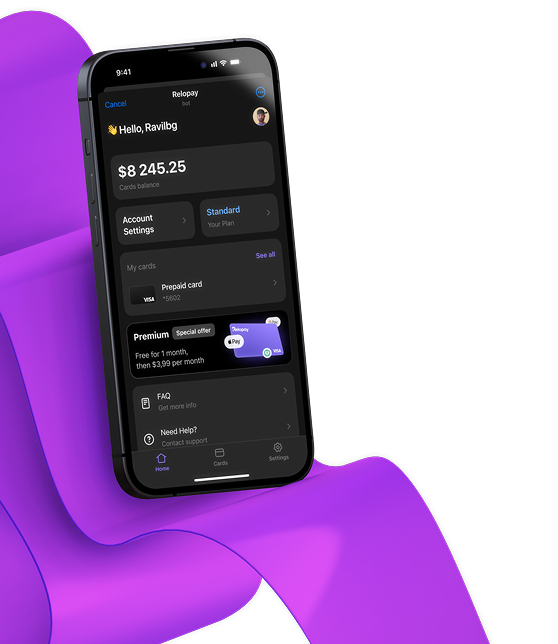Digital coins have grown from a niche experiment into a working tool for payments. Today you can pay with crypto when shopping, paying for services, or covering everyday costs. Transactions are quick, secure, and accepted by a rising number of merchants. Through wallets, cards, or processors, cryptocurrency can be used both online and in physical stores.
Ways to Pay with Crypto
People now have several options for spending digital assets. You can send them directly, rely on bank-style cards, or use services that take care of conversion.
– Direct wallet transfers — best for sending money between people or to small sellers.
– Crypto cards — prepaid or debit, valid at merchants connected to Visa or Mastercard.
– Processor platforms — handle conversion and compliance, letting businesses accept digital money without extra setup.
– Crypto cards — prepaid or debit, valid at merchants connected to Visa or Mastercard.
– Processor platforms — handle conversion and compliance, letting businesses accept digital money without extra setup.
Direct Crypto Wallet Payments
A very straightforward method of how to pay with crypto wallet is direct transfer. The buyer receives the merchant’s wallet address (as text or QR), enters the amount, approves the payment, and covers the chain fee. Fees depend on the blockchain, and confirmation may take a few seconds or several minutes if the system is busy. This option works for donations, peer-to-peer exchanges, or independent stores. Security matters: always check the address carefully, avoid suspicious links, and keep in mind that once sent, funds cannot be recovered.
Using Crypto Cards
Crypto debit and prepaid cards make it possible to pay with cryptocurrency in the same way as with ordinary bank cards. At checkout, balances are automatically exchanged for local currency, so there is no need to swap coins manually. These cards work within Visa and Mastercard networks, opening access to more than 130 million merchants worldwide. Main benefits: easy use, instant conversion, international acceptance, and spending control for prepaid formats. Providers mostly issue debit and prepaid versions because they follow regulations and help users avoid credit risks, which makes them convenient for day-to-day payments.
Third-Party Payment Processors
Some gateways specialize in handling crypto transactions for merchants. They integrate into checkout systems, provide fraud protection, and convert tokens into fiat currency.
How it works:
– Buyer chooses “Pay with crypto”.
– The service shows an invoice or QR.
– The customer transfers funds.
– Processor confirms, swaps into fiat, and credits the seller.
– Buyer chooses “Pay with crypto”.
– The service shows an invoice or QR.
– The customer transfers funds.
– Processor confirms, swaps into fiat, and credits the seller.
This model makes crypto transactions accessible, keeps merchants compliant with KYC/AML, and reduces the technical burden of accepting blockchain payments.
How to Pay Online with Cryptocurrency
Paying online with cryptocurrency is simple once you know the steps:
– Pick crypto as the option at checkout.
– Scan the QR code or copy the payment address.
– Verify the amount and approve.
– Wait until the blockchain confirms the transfer.
– Scan the QR code or copy the payment address.
– Verify the amount and approve.
– Wait until the blockchain confirms the transfer.
Always use secure devices and trusted websites. The experience is similar to PayPal or card payments, but validation runs on blockchain instead of banks.
Merchant Acceptance and Limitations
You can pay online with crypto at thousands of stores, but it is not universal. Travel, gaming, and tech retailers lead in adoption, while laws and geography still slow broader use. Cards and processors help by connecting digital assets with both online platforms and offline stores, making it easier to pay online with crypto across borders.
Security Tips for Online Crypto Payments
Safe practice is vital:
– Check that the store is authentic.
– Avoid suspicious links or redirects.
– Verify payment addresses carefully.
– Keep private keys secret.
– Turn on two-factor authentication.
– Avoid suspicious links or redirects.
– Verify payment addresses carefully.
– Keep private keys secret.
– Turn on two-factor authentication.
These habits lower the risk of fraud, phishing, or mistakes.
Benefits of Paying with Crypto
Digital assets bring several clear benefits compared to traditional banking:
– Privacy and security - less personal information shared.
– Speed and efficiency - quick settlement across borders.
– Lower fees - cheaper than many cards or transfers.
– Global coverage - available in most countries.
– Financial inclusion - a solution for people without banks.
– Speed and efficiency - quick settlement across borders.
– Lower fees - cheaper than many cards or transfers.
– Global coverage - available in most countries.
– Financial inclusion - a solution for people without banks.
Reports show that adoption of crypto payments grows by double digits yearly, with billions in transaction volume worldwide.
Privacy and Security
Unlike cards, which reveal account details, blockchain records are pseudonymous. Transactions are stored on the chain but not directly linked to names, reducing risks of leaks and identity theft. Verification also helps prevent chargebacks.
Speed and Cost Efficiency
When you buy things with crypto, payments usually arrive much faster than bank wires, which can take days. Most chains confirm in minutes, while Layer-2 tools enable almost instant settlement. Costs are also lower than many banking or remittance services, especially for cross-border payments.
Limitations and Risks
Challenges include:
– Price volatility.
– Irreversible transactions.
– Different tax treatment in various countries.
– Unclear or shifting regulation.
– Irreversible transactions.
– Different tax treatment in various countries.
– Unclear or shifting regulation.
Users can reduce risks by using stablecoins, keeping transaction records, and choosing reliable services.
Common Use Cases for Crypto Payments
Where digital assets are especially useful:
– E-commerce and retail - spend online or in stores with cards or wallets.
– International remittances - pay someone with crypto faster and with fewer fees than banks.
– Bill and subscription services - utilities, credit cards, cloud storage, or AI tools like Claude AI.
– Donations - charities now accept tokens worldwide.
– International remittances - pay someone with crypto faster and with fewer fees than banks.
– Bill and subscription services - utilities, credit cards, cloud storage, or AI tools like Claude AI.
– Donations - charities now accept tokens worldwide.
Retail and E-commerce
More than 32,000 businesses already accept cryptocurrency, and adoption grows steadily. Surveys show 40% of Gen Z and millennials prefer brands that support digital assets, and 75% of merchants plan to add this option within two years. Key areas: electronics, travel, food, gaming, and digital services.
International Remittances
One of the most practical cases is sending money abroad. When you pay someone with crypto, transfers often finish in minutes instead of days, with lower fees than banks. Users must, however, check compliance in both sending and receiving countries.
Paying Bills with Crypto
New services now make it possible to pay bills with crypto. Utilities, mortgages, insurance, and credit card balances can all be settled this way. Platforms connect with providers or processors to convert tokens into fiat, giving users more freedom to pay bills with crypto for regular expenses.
Getting Started: Step-by-Step Guide
If you are new, here is how to pay with cryptocurrency:
- Set up a wallet - mobile, desktop, or hardware.
- Buy coins - Bitcoin, Ethereum, or stablecoins.
- Secure assets - save seed phrases and enable 2FA.
- Link a card or processor.
- Pick the payment method - transfer, card, or processor.
- Test with a small transaction.
- Keep records for taxes and budgeting.
Troubleshooting tips: Delays usually mean network congestion. Declines often point to low balance or unsupported coins. Double-check addresses. If a processor fails, reconnect or update. If you suspect risk, move funds to a new wallet and refresh security settings.
Frequently Asked Questions
Where can I pay with crypto?
Large U.S. retailers like Home Depot, subscription services such as ExpressVPN, and Sheetz - a convenience store chain with over 750 branches - already accept digital assets. To discover more, directories like BitcoinWide list over 8,500 businesses where you can pay with crypto online and offline.
Which cryptocurrencies can I use for payments?
Bitcoin and Ethereum are the most common. Stablecoins such as USDT and USDC are valued for lower volatility. The choice depends on fees, speed, and whether merchants support the asset. Bitcoin is widely accepted but may be slow in busy times. Ethereum clears faster but can be costly. Stablecoins usually provide quick and cheap settlement.
What fees are involved in crypto payments?
Users may face:
– Network charges for blockchain validation.
– Processor service fees.
– Conversion spreads when coins are changed into fiat.
– Processor service fees.
– Conversion spreads when coins are changed into fiat.
Even with these, payments with digital assets are often cheaper than card networks, especially for cross-border transfers. Savings are possible if you send during off-peak hours or use prepaid cards.
How quickly are crypto transactions processed?
Speed depends on chain, traffic, and chosen fee. Bitcoin confirmations may take around 10 minutes, Ethereum usually a few minutes, while Lightning or Solana often confirm almost instantly.
Do I need a special wallet or account to pay with crypto?
Yes, a crypto wallet is necessary to hold and send funds. Choices include custodial wallets, hardware devices for strong protection, or mobile apps for daily use. Crypto cards linked to wallets are also a simple way to pay directly.
Digital asset payments are rapidly becoming mainstream. With wallets, cards, and processors, they offer speed, safety, and global access. Despite some risks, the benefits make them a practical tool for daily life. As adoption continues, services like Relopay connect blockchain with real finance, making it easier than ever to embrace the future of payments.







